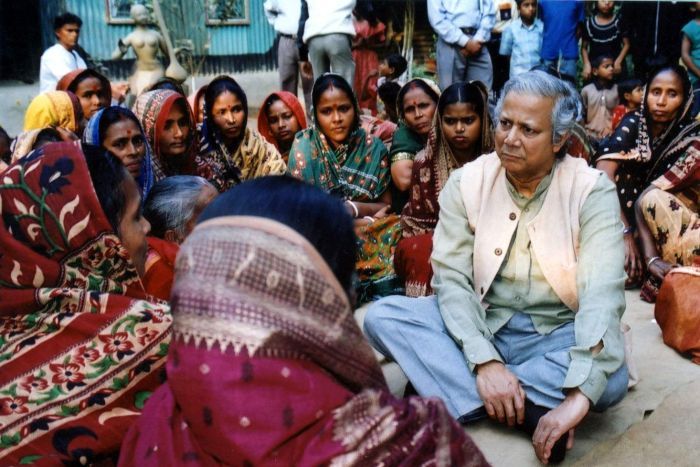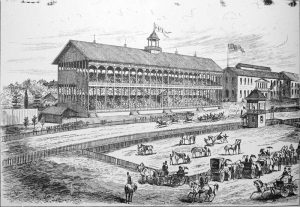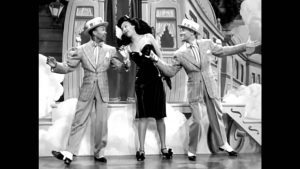In the early 1970s, Bangladesh endured a war that left its people to cope with the harsh effects of famine and poverty. In 1976, Mohamed Yunus saw these crippling effects in the village where he studied the economic impacts of poverty. Yunus went on to design micro-loans, or micro-financing, which are “small loans typically for financing entrepreneurial projects by impoverished individuals and groups especially in poor or developing regions” in order to alleviate some of the poverty.1 What began as Yunus offering small loans to women and men in Bangladesh has become a factor in creating gender equality and the reduction of poverty.

In 1983, Yunus took his micro-loans and opened Grameen Bank, which he designed to assist rural communities with poor or no credit, putting an emphasis on women. Credit was viewed as one of the biggest issues holding people down to a rural area and not allowing for economic growth. Yunus believed that in order to fight poverty, one needed to fight the root of the problems, which he believed were institutions and laws that created these situations with little to no economic opportunities. He also believed that charity creates a form of dependency because those who receive charity do not have the support to create institutions that will continue to benefit them.2 Yunus knew that his bank needed to have the different programs required to not only help individuals start businesses, but also continue their businesses. To keep people on track for their loan repayments, and continue their economic development, the Bank created the “Sixteen Decisions.”
The Grameen Bank offered six types of loans: general, collective, technology, housing loans, family loans, and short-term loans. Housing loans had a lower interest rate and a longer repayment period.3

This type of loan relates directly to number three of the Sixteen Decisions, which says, “We will not live in dilapidated houses. We will repair our houses and work toward constructing new houses.4 As of 2016, the total number of houses built using housing loans was 702,730.5 While short term and general loans can be used for almost any activity, with a repayment period of generally a year, the only difference with collective loans is that it is used by the group as a whole instead of by an individual. Family loans allow members of a household to participate in incoming earning activities. Finally, technology loans are used for bigger projects and are the least used.6
The Grameen Bank had multiple programs beyond providing loans. The Bank created a program that would allow their members to starting building credit through the Credit Delivery Model, which is a group comprised of five people that fit these conditions: members of the same village but not same household, similar economic resources, but not owning more than half an acre of land. Each group contained a chairperson and a secretary who each hold office for a year before a new election. After a few weeks of participating in the group, repaying the loan, as well as putting some money in savings, one or two members are chosen to be given credit. In order for the next two members to be given credit, the first must continue to make their payments on their loan, and discipline of the group is maintained. The chairperson is generally the last to receive credit.7 This type of program was designed after the fourteenth Decision, which is “14. We will always be ready to help each other. If anyone is having difficulty, we will help him.”8
The Bank also recognized that a part of economic success is the ability to develop social skills. Thus, the Social Development Program was created, and aimed specifically at women because “social development is necessary for economic development because of their primary role in providing health, education, and nutrition.” This program also provided seeds to be planted, established schools for tutoring, and built houses and latrines, which relates to seven of the Sixteen Decisions, all of which are based around education, clean environments, and growing food. The Bank helped to create tutoring schools by providing training to women as well as starting schools separately. They did this because many of the women that take out loans have children and nothing to do with them while they are at work. Adding to the social development, the Bank and loaners make the promise in the tenth Decision to “not take any dowry in [their]sons’ wedding, neither will [they] give any dowry in [their] daughters’ wedding.” The Bank reported in 1994 that the number of marriages with no dowries went from 2,738 in 1985 to 30,127.9
Another program designed to further social development was created in 2002 called “Struggling Members Programme.” This program is designed to specifically help beggars. In many of the communities that the Grameen Bank worked in, begging is considered a taboo and these individuals cannot typically partake in many programs to help alleviate their economic situation. The Struggling Members Programme is interest free, and as of 2016, there were 109,000 members involved with an 85% repayment rate. In 2016, approximately 19,000 of those members had been able to leave the begging class and were now peddlers.10
In the international community, there is debate on whether or not microloans have a positive or negative impact, and whether they have an impact at all. Some argue that the Bank decreases pressure on the governments due to the bank helping provide basic necessities. Others feel that the Bank doesn’t fight the patriarchal system well enough for the women to have true independent economic opportunities and success. The most common argument against micro-credit, micro-financing, and the Grameen Bank is that it has no impact on the economic, social, or political well-being of the lender and more often than not, leads to more debt.11
Critics who claim that the Grameen Bank does not improve, and can potentially worsen, a woman’s position in society, use the argument that some of the husbands force their wives to take out the loan. John Morduch argues that women become “mediators between male household members and the bank,” rather than making any economic advancements themselves. This further diminishes women’s fight for equality and representation in these rural areas.12

Despite this study, it is shown that the education of both girls and boys is higher in families who borrow from Grameen Bank than those that don’t, with almost all girls in borrowers’ homes educated versus 60% in non-borrower homes and boys at 81% versus 54% respectively.13 In 2006, Mohamed Yunus won the Nobel Peace Prize for his actions fighting to end poverty. At this point, there had been over seven million people who took out loans. 14 Since the creation of the Grameen Bank, Yunus has been able to open more banks in many new countries, including having a headquarters in Washington D.C., and other offices in other parts of the United States, South America, and Africa.15 It is still widely believed that though micro-loans from the Grameen Bank may not attack the institutional patriarchy as much as it should and it may not have short term positive effects, there are still many years to study and look forward to. Furthermore, the women and men who are able to get these loans are positively impacted. No, there may not be noticeable global change made through the use of micro-loans yet, but they still have the ability to change just one person’s life, be it through housing loans or the beggars’ program that the Bank has created, which is the first steps in making global change.
In 2015, all members of the United Nations adopted the 2030 Sustainable Goals, which was the accumulation of decades of work by different sections of the UN. Seventeen goals were unanimously agreed upon, the first of which reads: “End poverty in all its forms everywhere.”16 Through implementing structures and institutions such as the Grameen Bank, and continuing to be vigilant when it comes to corruption, extreme poverty can be reduced.
- “Muhammad Yunus,” Grameen Bank, https://grameenfoundation.org/muhammad-yunus; “Microloan,” Merriam-Webster, https://www.merriam-webster.com/dictionary/microloan. ↵
- Anand Bradsher, “Microloan Pioneer and His Bank Win Nobel Peace Prize,” The New York Times, October 13, 2006, https://www.nytimes.com/2006/10/13/business/14nobelcnd.html, ↵
- Shahidur Khandker, Baqui Khalily, and Zahed Khan, “Grameen Bank Performance and Sustainability,” World Bank (website), 1995, http://documents.worldbank.org/curated/en/893101468741588109/pdf/multi-page.pdf. ↵
- Shahidur Khandker, Baqui Khalily, and Zahed Khan, “Grameen Bank Performance and Sustainability,” World Bank (website), 1995, http://documents.worldbank.org/curated/en/893101468741588109/pdf/multi-page.pdf. ↵
- “Annual Report 2016,” Grameen.com (website), August 17, 2017, http://www.grameen.com/wp-content/uploads/bsk-pdf-manager/GB-AR-2016_34.pdf. ↵
- Shahidur Khandker, Baqui Khalily, and Zahed Khan, “Grameen Bank Performance and Sustainability,” World Bank (website), 1995, http://documents.worldbank.org/curated/en/893101468741588109/pdf/multi-page.pdf. ↵
- Shahidur Khandker, Baqui Khalily, and Zahed Khan, “Grameen Bank Performance and Sustainability,” World Bank (website), 1995, http://documents.worldbank.org/curated/en/893101468741588109/pdf/multi-page.pdf. ↵
- Shahidur Khandker, Baqui Khalily, and Zahed Khan, “Grameen Bank Performance and Sustainability,” World Bank (website), 1995, http://documents.worldbank.org/curated/en/893101468741588109/pdf/multi-page.pdf. ↵
- Shahidur Khandker, Baqui Khalily, and Zahed Khan, “Grameen Bank Performance and Sustainability,” World Bank (website), 1995, http://documents.worldbank.org/curated/en/893101468741588109/pdf/multi-page.pdf; “Annual Report 2016,” Grameen Bank (website), August 17, 2017: 151 http://www.grameen.com/wp-content/uploads/bsk-pdf-manager/GB-AR-2016_34.pdf. ↵
- “Annual Report 2016,” Grameen.com (website), August 17, 2017, http://www.grameen.com/wp-content/uploads/bsk-pdf-manager/GB-AR-2016_34.pdf. ↵
- Alexandra Bernasek, “Banking on Social Change: Grameen Bank Lending to Women,” International Journal of Politics, Culture, and Society 16, no. 3 (2003): 369-85. ↵
- Jonathan Morduch, “The Role of Subsidies in Microfinance: Evidence from the Grameen Bank,” Journal of Development Economics 60, no. 1 (October 1999): 6. ↵
- Ana Maria Moreno, “Grameen Microfinance: An Evaluation of the Successes and Limitations of the Grameen Bank,” (Honors thesis, University of Pennsylvania, 2010), 38. ↵
- “The Nobel Peace Prize 2006,” NobelPrize.org (website), 2006, https://www.nobelprize.org/prizes/peace/2006/grameen/facts/. ↵
- “Where We Work,” Grameen Bank (website), https://grameenfoundation.org/where-we-work ↵
- “Transforming Our World: The 2030 Agenda for Sustainable Development,” United Nations (website), September 2015 https://sustainabledevelopment.un.org/post2015/transformingourworld. ↵



10 comments
Raul Colunga
It is amazing what Mohamed Yunus did for his people of Bangladesh. He knew that being poor did not mean that people are useless and could not better themselves. It is great to see that banks have opened up in other least developed countries which allows people to better themselves. Anything that can help alleviate poverty from the world should be implemented.
Rinnu Joy
It was an interesting article, talking about the great project, Micro-Loans, Macro-Impacts put forward by a great man, Mohamed Yunus. This project really brought a solution for the poverty and other struggles that the poor people faced in Bangladesh. The Micro-Loans, Macro-Impacts not only focused on granting loans but also it focused on the social improvement of the society and so introduced the Social Development Program which brought a significant increase on the education rates.
Congratulations for the great work!
Addie Piatz
Before reading this I didn’t know anything about Micro loans. I think this article has a lot of interesting points and views. I specifically like the one where they said that charity doesn’t help poverty and I couldn’t agree more. With some cases some will take the charity and use it to turn their lives around as much as it allows but most just take it and it doesn’t teach them anything.
Malleigh Ebel
I found this as an interesting solution to the economic problems among the rural areas of Bangladesh. The work of Mohamed Yunus to make micro-loans to increase the economic prosperity of his region greatly impacted the community and helped build new businesses. The kids from these families began having time to go to school, and bettering the future generations to build upon their parents who were being assisted by the loan programs. I thought Yunus brought up an interesting perspective on charity, as it actually does not enable those in poverty to rise above the poverty line. This idea reminded me of the saying: give a man a fish and you’ll feed him for a day, teach a man to fish and you feed him for a lifetime.
Malleigh Ebel
This article provides an interesting solution to the economic problems among the rural areas of Bangladesh. The work of Mohamed Yunus to make micro-loans to increase the economic prosperity of his region greatly impacted the community and helped build new businesses. The kids from these families began having time to go to school, and bettering the future generations to build upon their parents who were being assisted by the loan programs. I thought Yunus brought up an interesting perspective on charity, as it actually does not enable those in poverty to rise above the poverty line. This idea reminded me of the saying: give a man a fish and you’ll feed him for a day, teach a man to fish and you feed him for a lifetime.
Edith Santos Sevilla
I had not heard of the different programs including the micro loans and the work of Mohamed Yunus, to me it is very interesting how financing is affecting the people especially those in poverty. I see the two points of views of how the loans can be affecting the economy and I agree with the author, that even if is just one family being affected it is still better and its making a small change. People cannot be expecting a global change right away only with micro loans. The statistics shown are a very good representative of the consequences and the results that are happening due to the loans. Overall this article is really informative and I learned about different programs that I did not know existed.
Hamza Bourouz
interesting article and interesting project. being from a developing country I can definitely see how these micro loans can be very effective in alleviate the economic level of the most economically vulnerable individuals in the society. I believe such loans do exist in Algeria. However, they are provided by the government with relatively high interest rate.
Octaviano Huron
I had learned in elementary school that Bangladesh is one of the poorest countries in the world. Despite the controversy that surrounds the institution, the Grameen Bank seems to be alleviating people stuck in extreme poverty. The Bangladeshi are making strides not only to overcome sorrow and sadness, but to replace them with education, opportunity, and hope. Very interesting article.
Sarah Uhlig
It is good to know that people’s struggles with currency and poverty are being maintained and have the attention of especially the United Nations. I find these articles that you have written very interesting and unique among the other articles. These articles take place outside of our society with different social problems and it is very interesting and good to be aware of how other people are needing help in our world.
Mariah Garcia
I was not aware of this conflict, nor of the philanthropic nature of Mohamed Yunus. This man worked hard to provide for his community, and in the wake of the murder of Nipsey Hussle, this comes across as even more poignant, as Hussle and Yunus have many similarities with one another. This was very well written, and I enjoyed reading it.